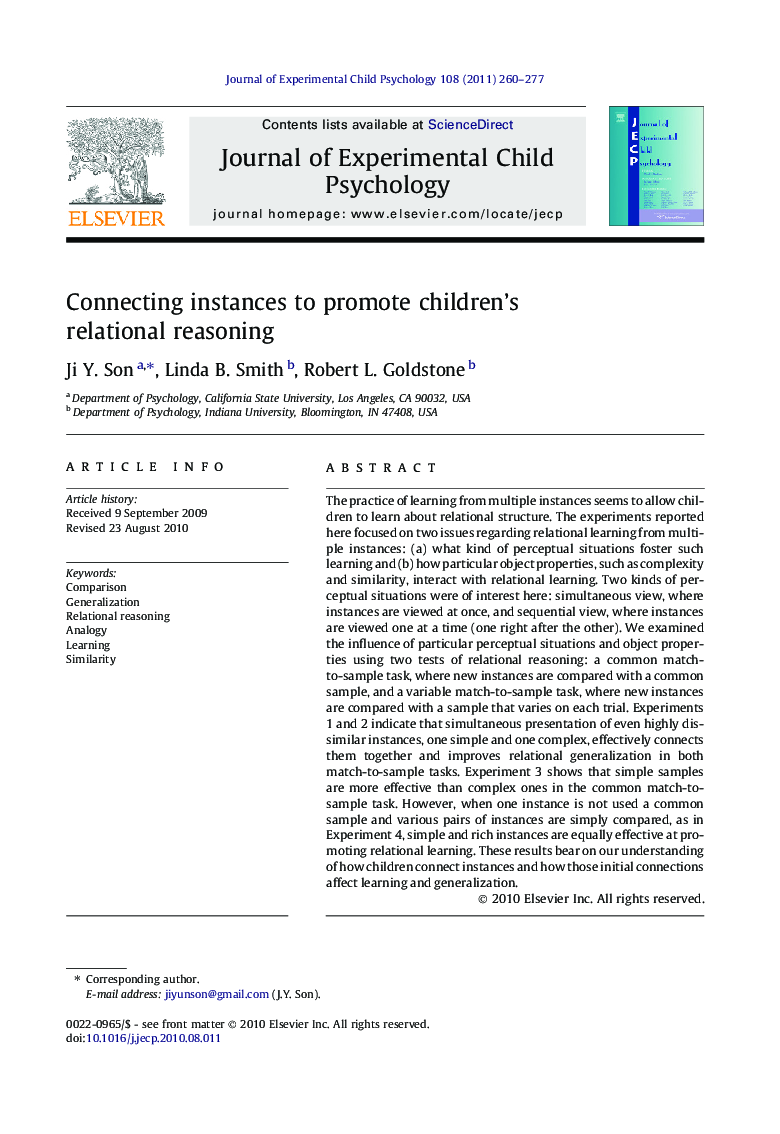| کد مقاله | کد نشریه | سال انتشار | مقاله انگلیسی | نسخه تمام متن |
|---|---|---|---|---|
| 918391 | 919479 | 2011 | 18 صفحه PDF | دانلود رایگان |

The practice of learning from multiple instances seems to allow children to learn about relational structure. The experiments reported here focused on two issues regarding relational learning from multiple instances: (a) what kind of perceptual situations foster such learning and (b) how particular object properties, such as complexity and similarity, interact with relational learning. Two kinds of perceptual situations were of interest here: simultaneous view, where instances are viewed at once, and sequential view, where instances are viewed one at a time (one right after the other). We examined the influence of particular perceptual situations and object properties using two tests of relational reasoning: a common match-to-sample task, where new instances are compared with a common sample, and a variable match-to-sample task, where new instances are compared with a sample that varies on each trial. Experiments 1 and 2 indicate that simultaneous presentation of even highly dissimilar instances, one simple and one complex, effectively connects them together and improves relational generalization in both match-to-sample tasks. Experiment 3 shows that simple samples are more effective than complex ones in the common match-to-sample task. However, when one instance is not used a common sample and various pairs of instances are simply compared, as in Experiment 4, simple and rich instances are equally effective at promoting relational learning. These results bear on our understanding of how children connect instances and how those initial connections affect learning and generalization.
Journal: Journal of Experimental Child Psychology - Volume 108, Issue 2, February 2011, Pages 260–277